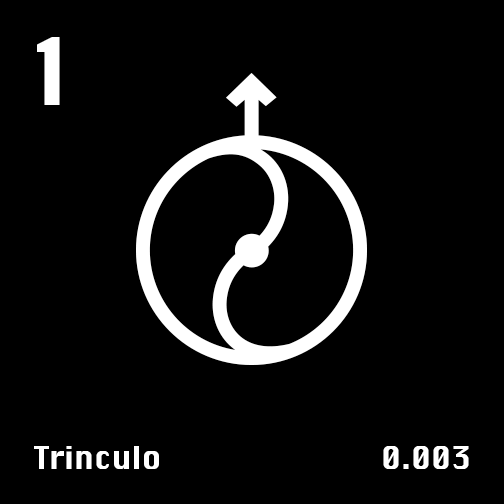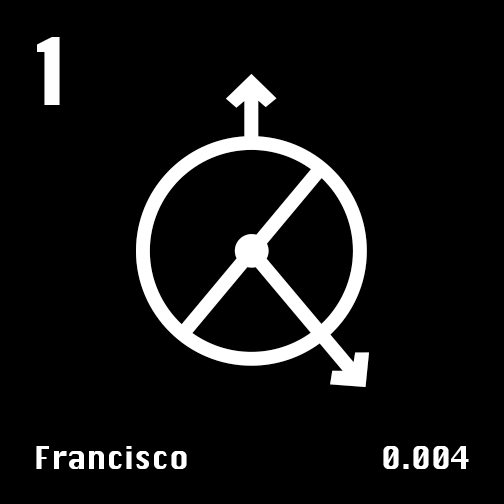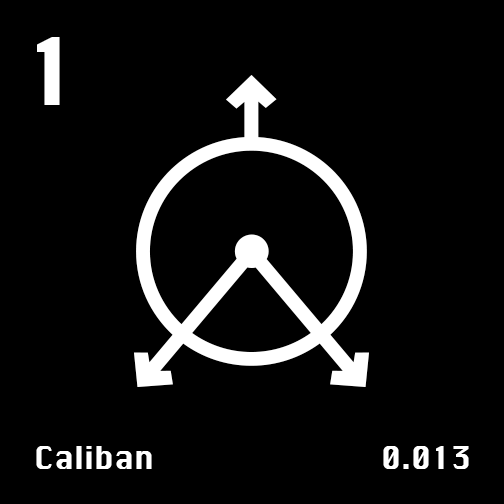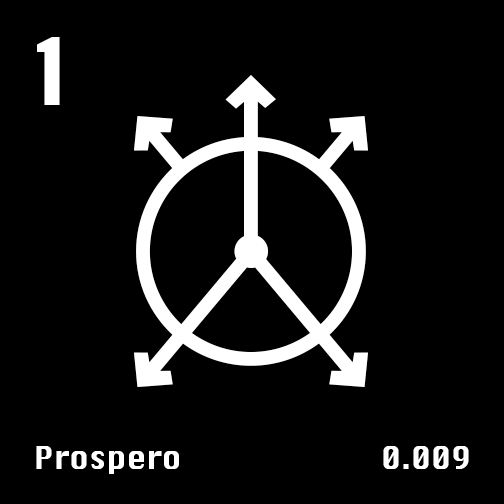The Uranus System
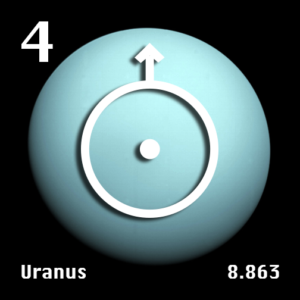
Uranus is the seventh planet from the Sun at a distance of 1.8 billion miles (2.9 billion kilometers) or 19.8 astronomical units away from the Sun and the third-largest planet in diameter in our Solar System.
Like other giant planets, Uranus has a ring system, a magnetosphere, and numerous moons. Thirteen faint rings and 27 moons surround Uranus. A day on Uranus takes about 17 hours, and a year on Uranus takes about 84 Earth years (30,687 Earth days). Uranus has a radius of 15,759.2 miles (25,362 kilometers), making it four times wider than Earth. If Earth were the size of a marble, Uranus would be about as big as a baseball.
Uranus shares many similarities in composition to Neptune. Scientists at the Planetary Habitability Lab classify Uranus and Neptune as Cold Neptunium planets. They are more commonly classified as ice giants. Uranus’s atmosphere is similar to Jupiter’s and Saturn’s in that they are primarily composed of hydrogen and helium with water, ammonia, and traces of other hydrocarbons.
Uranus’ atmosphere has not been as dynamic as Neptune’s atmosphere. However, Uranus has pretty strong wind speeds reaching up to 560 miles per hour (900 kilometers per hour) in some places. Uranus is also slightly colder than Neptune, with a minimum temperature of 49K (-224.2 degrees Celsius).
Uranus temperature is partially the result of 20 times the distance from the Sun than Earth. Since the intensity of sunlight decreases with distance, it receives around 1/400 the intensity of sunlight we receive here on Earth.
History
Uranus was the first planet found with a telescope as it is visible to the naked eye as with the other classical worlds, but ancient observers missed it because of its dimness and slow orbit. Uranus had been observed and documented before its official recognition as a planet. It is believed that the earliest known observation was by Hipparchos in 128 BC. He may have recorded it as a star in his star catalog later incorporated into Ptolemy’s Almagest.
The earliest documented sighting was in 1690. John Flamsteed, an English astronomer, observed it at least six times, cataloging it as 34 Tauri. French astronomer Pierre Charles Le Monnier also saw Uranus at least twelve times between 1750 and 1769, including an observation that spanned four consecutive nights.
Uranus was officially discovered in 1781 by William Herschel from the garden of his home. Herschel initially thought it was a comet. As time passed, Herschel continued to describe this new object as a comet, although other astronomers had already begun to suspect otherwise. Through observation, several scientists, including Anders Johan Lexell and Johann Elert Bode, hypothesized that the object was more planet than comet due to its near-circular orbit.
Eventually, in 1783, Herschel formally announced the recognization of the object as a planet 1783 since it was almost universally known to the European astronomical circles as a planet. The object was soon widely accepted as a new planet. King George III recognized Herschel’s achievement by giving him an annual stipend on the condition that he move to Windsor so that the Royal Family could use his telescopes on occasion.
William Herschel tried to name the planet “Georgium Sidus” after King George III as a show of gratitude. However, this name was unpopular outside of London. Nearly 70 years later, the world was named for Uranus, the Greek god of the sky, as suggested by Johann Bode.
One of Bode’s arguments for Uranus’ name was that Saturn was the father of Jupiter; therefore, the new planet should be named after the father of Saturn. Bode garnered further support for this name when his Royal Academy colleague Martin Klaproth named his newly discovered element uranium to support Bode’s choice in 1789.
Observing Uranus in the Nighttime Sky
Uranus tetters on the edge of naked-eye visibility with an average apparent magnitude of 5.68. This range of brightness is near the limit of naked-eye visibility, which is around +6.5. Uranus’s magnitude varies based on its distance from the Sun and the Earth. Uranus is best seen with a naked eye in dark skies at opposition, and with the help of binoculars, it is easy to target, even in urban conditions. When viewed with 15 and 23 cm amateur telescopes, Uranus appears as a pale cyan disk. You can see Uranus’s cloud patterns and some of the larger satellites, such as Titania and Oberon with large telescopes of 25 cm or broader.
Uranus' Physical Features
The fascinating aspect of Uranus is that it is the only planet whose equator is nearly at a right angle to its orbit, causing the planet to rotate on its “side.” Scientists speculate that during the formation of the Solar System, an Earth-sized protoplanet collided with Uranus, causing the planet to “tip over” in its orientation.
This unique tilt causes some of the most extreme seasons and odd days in the solar system. Along with rotating on its side, Uranus rotates in the opposite direction than most planets, from East to West.
These odd orbital mechanics means that the Sun rises and sets with the seasons, not on a day-to-day basis. The Sun shines directly over each pole for nearly a quarter of each Uranian year, plunging the other half of Uranus into a 21-year-long, dark winter.
The Sun shines continuously in the Uranian sky during the solstice and completes a circle around the Sun-facing pole. Only a narrow strip around the equator experiences a quick day-night cycle, with the Sun appearing extremely low over the horizon.
During equinoxes, the Sun shines directly over the equator of Uranus. This gives an observer near the equator day-night cycles similar to those seen on most other planets. The only difference would be that the Sun would rise in the South and set in the North. Likewise, an observer near Uranus’s poles would experience short days with the Sun appearing low over the horizon.
Uranus is about 14.5 times more massive than Earth, making it the least massive of the gas giants. Uranus’s density of 1.27 g/cm3 makes Uranus the second least dense planet and indicates that it is primarily of various ices, such as water, methane, and ammonia.
Scientists believe that Uranus’ structure consists of three layers: a silicate, iron-nickel rocky core at the center, an icy mantle, and a gaseous hydrogen & helium atmosphere. The icy mantle comprises the bulk of Uranus’ mass. The core is relatively small, with a radius of less than 20% of Uranus.
The mantle does not consist of ice in the conventional sense. It is composed of a dense, hot fluid consisting of water, ammonia, and other chemical compounds. This high electrical fluid is sometimes referred to as a water–ammonia ocean. Uranus’ atmosphere is relatively insubstantial, weighing about 0.5 Earth masses and extending for the last 20% of Uranus’ radius.
Que-Fact: Uranus may have an ocean of liquid diamond, with floating solid ‘diamond-bergs.’ How is this a possibility? The extreme pressure and temperature deep within Uranus may break up methane molecules, freeing the subsequent carbon atoms to condense into crystals of diamond that rain down through the mantle like hailstones.
Scientists have developed experiments to test the liquid diamond hypothesis with varying results. Past experiments failed to produce temperatures and pressures expected in Uranus (and Neptune). However, recent experiments using shock heating by lasers could reach temperatures and pressures expected on Uranus at a depth of 10,000 kilometers below the surface. The experiment was tried with polystyrene. Nearly every carbon atom in the compound was converted into diamond crystals within a nanosecond of the experiment.
Explorations and Missions to Uranus
In 1986, NASA’s Voyager II interplanetary probe visited Uranus in January 1986 after being launched in 1977. The probe came within 50,600 miles of Uranus’ cloud tops before continuing its journey to Neptune.
Voyager II studied Uranus’ atmosphere’s structure, magnetic field, tilt, chemical composition, and unusual weather caused by its axial tilt. Voyager II made the first detailed observation and mapping of Uranus’ five largest moons, Ariel, Miranda, Titania, Oberon, and Umbriel, and discovered ten more moons.
The Voyager II probe was the last probe to visit Uranus. NASA considered sending Cassini spacecraft from Saturn to Uranus in 2009. However, the Cassini team abandoned the idea in favor of destroying it in Saturn’s atmosphere. One of the deciding factors was that the probe would have taken about twenty years to reach the Uranian system after leaving Saturn.
In 2015, NASA announced it had begun a study to determine the feasibility of returning to Uranus and Neptune, with a budget of $2 billion. The study was initiated by Jim Green, NASA’s planetary science director. Jim proposed the launch of the mission in the late 2020s. The mission would be contingent upon support from the planetary science community and NASA’s ability to provide nuclear power for the spacecraft.
MUSE, which stands for Mission to Uranus for Science and Exploration, was conceived in 2012 and proposed in 2015 by European Space Operations Centre. The mission’s goal was to study Uranus’ atmosphere, interior, moons, rings, and magnetosphere.
Moons of Uranus
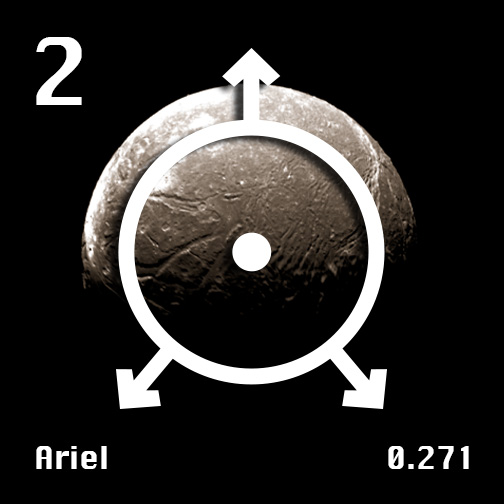
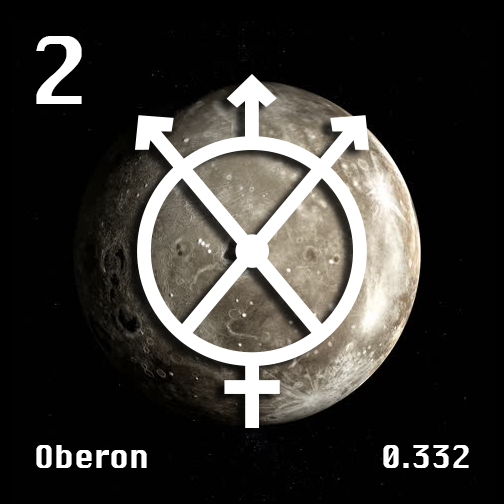
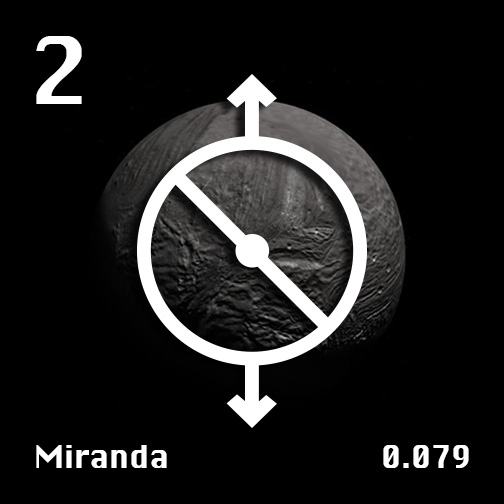
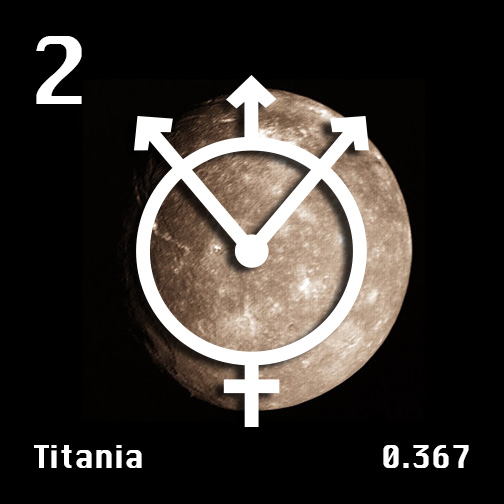
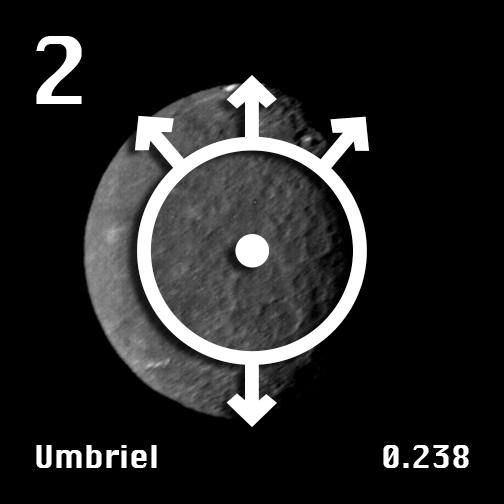
Uranus Five Major Moons
Uranus’s five major moons, Miranda, Ariel, Umbriel, Titania, and Oberon, are massive enough to have reached hydrostatic equilibrium but are also some of the smallest larger moons in the Solar System. The largest of these moons is Titania, 1,578 km in diameter and the eighth-largest natural satellite in the Solar System. For reference, it is about one-twentieth the mass of the Earth’s Moon.
All Uranus’s major moons comprise approximately equal amounts of rock and ice, except Miranda, mainly made of ice. The icy component of these moons is thought to include carbon dioxide and ammonia. Their surfaces are heavily cratered, though all of them, except for Umbriel, display signs of endogenic resurfacing in the form of canyons and graben.
Fun Facts about Miranda
Miranda, being an outlier, displays ovoid race-track-like structures called coronae. Venus is the only other celestial body to reveal a corona. These formations appear to be upwellings of warm internal material. Ariel appears to have the youngest surface of the moons with the fewest impact craters, while Umbriel’s surface appears oldest.
Because Uranus orbits the Sun at a severe inclination, on its side, its moons also share its extreme seasonal cycles. The northern and southern poles of Uranus and its moons have 42 years of night time 42 years of daytime, with the Sun rising close to the zenith over one of the poles at each solstice.
The Voyager II flyby coincided with the southern hemisphere’s summer solstice in 1986 when nearly the system’s northern hemispheres were experiencing nighttime. Uranus’ equatorial plane intersects the Earth’s equatorial plane during its equinox once every 42 years. During this time period, the mutual occultations of Uranus’s moons are visible. The last occultation was observed in May 2007 when for six minutes, Oberon occulted Umbriel.
Miranda, designated Uranus V initially, is the smallest and innermost of Uranus’s five significant moons at just 470 km in diameter and 129,000 km from Uranus. Miranda’s size makes it one of the smallest celestial bodies in the Solar System rounded by hydrostatic equilibrium. Gerard Kuiper discovered Miranda in early 1948 at McDonald Observatory and subsequently named after Miranda from the Shakespearean play “The Tempest.”
Miranda orbits close to Uranus’s equatorial plane, perpendicular to the Solar System’s ecliptic (Uranus rotates on its side) and shares Uranus’s extreme seasonal cycle. The only close-up images of Miranda to date are from the Voyager II space probe in 1986, my brother’s birthday! Voyager II was only able to study Miranda’s southern hemisphere during the flyby.
Miranda’s surface has regions of broken terrain, crisscrossed by vast canyons, which scientists believe result from extensional tectonics consisting of liquid water frozen beneath the surface, expanding and causing the surface ice to split, thereby creating graben.
A graben is an elongated block of crust lying between two faults and displaced downward relative to the blocks on either side, creating a rift valley. Miranda’s rifts, valleys, and graben helped make the most massive cliff in the Solar System, Verona Rupes, which is over 12 miles high.
Other canyons are hundreds of kilometers long and tens of kilometers wide. Another fun fact about Miranda is that the temperature at Miranda’s south pole is around -307 degrees, a temperature in which pure water ice adopts the properties of solid rock.
A Closer Look At Ariel
Ariel is the fourth-largest of Uranus’s five largest moons and second closest to Uranus at 190,000 km from Uranus and is 720 miles in diameter. Like Miranda, Ariel is one of the smallest moons of the Solar System’s 19 known spherical moons with its size. It was discovered in 1851 by William Lassell and subsequently named after a sky spirit in the plays “The Rape” by Alexander Pope and a character in Shakespeare’s “The Tempest.”
Orbiting Uranus every 2.5 Earth days, Ariel is tidally locked and lies within the Uranian magnetosphere like Earth’s Moon. This arrangement exposes Ariel to a high-energy bombardment of magnetospheric plasma co-rotating with the planet. Scientists believe this bombardment of particles has led to the darkening of Ariel’s surface and a few other Uranus moons.
Ariel’s surface is heavily cratered, intersected by a network of scarps, canyons, and narrow ridges occurring mostly in Ariel’s mid-southern latitudes. Ariels craters appear to be more evenly dispersed and relatively small. The absence of large craters suggests that Ariel’s surface is relatively young or not as old as the Solar System’s.
Ariel’s canyons, known as chasmata, may represent graben formed by extensional faulting due to global tensional stresses. Structural stress is caused by freezing water or aqueous ammonia within the moon’s interior. The second main feature of Ariel’s terrain is ridged terrain, comprised of bands of ridges and troughs that measure hundreds of miles.
Uranus’ Outermost Moon: Oberon
Oberon is Uranus’ the outermost major moon, orbiting Uranus at about 584,000 km. It is also the second-largest of the Uranian moons and the ninth most massive moon in our Solar System.
Oberon derives its name from the mythical king of the fairies character in Shakespeare’s play “A Midsummer Night’s Dream.” Like Uranus’ other significant moons, Oberon consists of equal amounts of ice and rock with traces of ammonia and methane. Oberon orbits Uranus every 13.5 days. This orbital period is synchronous with Oberon’s rotational period, meaning it is tidally locked with one face always pointing toward Uranus.
Unlike Uranus’s other four major moons, Oberon spends a significant part of its orbit outside the Uranian magnetosphere. This results in Oberon’s surface receiving substantial doses of solar wind. Therefore, Oberon doesn’t share the darkened surface features present on the other major Uranian moons bombarded by particles from Uranus’ magnetosphere.
Overview of Umbriel
Umbriel was discovered in the fall of 1851 by William Lassell when Ariel was found. The moon was subsequently after a character within Alexander Pope’s poem “The Rape of the Lock.”
Umbriel has the darkest surface of Uranus’ moons and appears to have been shaped primarily by impacts. The presence of canyons suggests endogenic processes throughout the moon’s history. Oberon’s most prominent surface feature is a ring of bright material on the floor of the Wunda crater.
Umbriel is tidally locked with Uranus, only showing one face to Uranus and orbiting entirely inside Uranus’s magnetosphere. This means Umbriel is struck by magnetospheric plasma within Uranus’ magnetosphere. This bombardment may cause Umbriel’s trailing hemisphere darkness which is also a characteristic observed for all of Uranus’s moons except Oberon. Umbriel also absorbs magnetospheric charged particles, which creates a pronounced dip in energetic particle count near the moon’s orbit around Uranus.
Titania is the eighth-most massive moon in the Solar System and the largest of Uranus’ five large moons at a diameter of 1,578 kilometers (981 mi). Titania was discovered by William Herschel in 1787 and subsequently named after the queen of the fairies in Shakespeare’s A Midsummer Night’s Dream. Titania’s orbit lies inside Uranus’s magnetosphere.
The surface of Titania appears to have been shaped by both impacts and endogenic processes. The surface formed a system of vast canyons and scarps, which could result from interior expansion during the later stages of its evolution as a planetary body.
Although Titania is cratered, it is less cratered than Oberon, the outermost of the five large moons of Uranus. This fact adds credibility to the theory that Titania underwent massive endogenic changes in the past.
Infrared spectroscopy has revealed the presence of water ice and frozen carbon dioxide on the surface of Titania, suggesting that the moon may have a light carbon dioxide atmosphere with a surface pressure of around 10−13 bar.
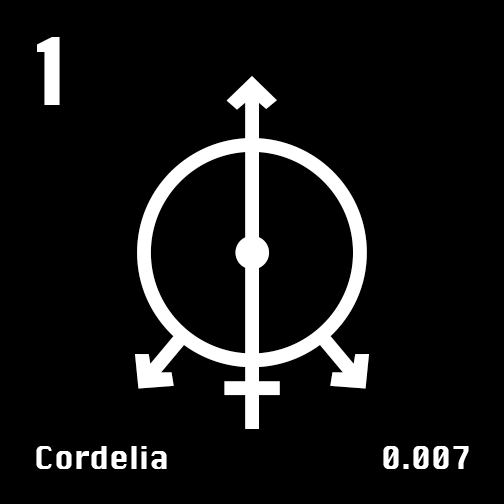
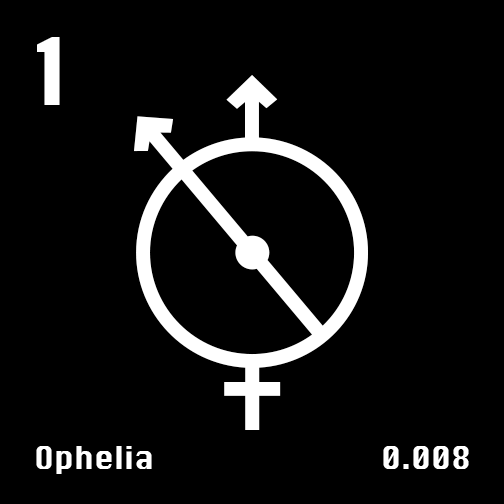
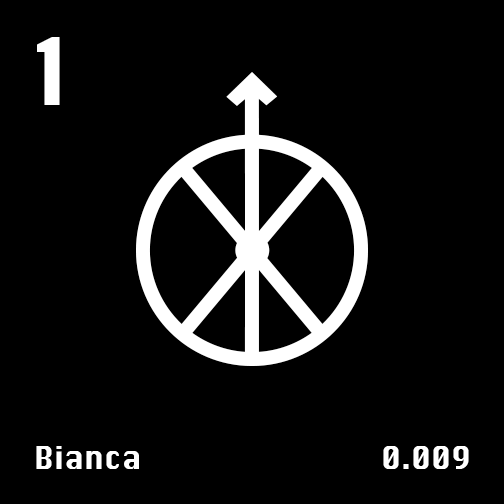
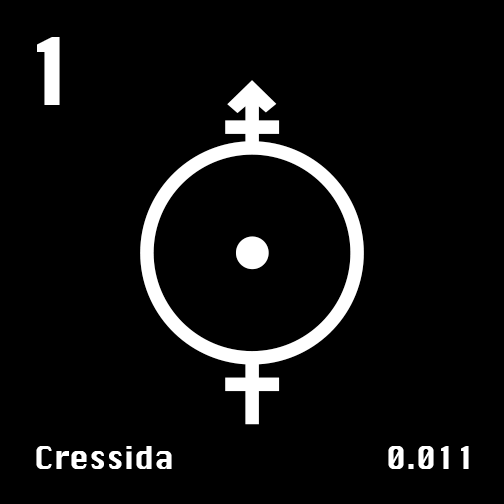
Uranus has 27 known moons named for characters from the works of William Shakespeare and Alexander Pope. Researchers classify Uranus’s moons into three distinct groups, the thirteen inner moons, the five major moons, and nine irregular moons. The orbits of Uranus’s regular moons are nearly coplanar with Uranus’s equator, which is tilted 97.77° to its orbit. Uranus’s irregular moon’s orbits are elliptical and highly inclined to Uranus’s equator. These moons also orbit at vast distances from the planet.
The small dark inner moons are share properties and origins with Uranus’s rings. Uranus’ inner moons are Cordelia, Ophelia, Bianca, Cressida, Desdemona, Juliet, Portia, Rosalind, Cupid, Belinda, Perdita, Puck, and Mab. These moons are small, ranging from 2 – 200 km in diameter. Many of the inner moons share characteristics with Uranus’ rings. This correlation suggests that the satellites could be remnants from a giant moon that was destroyed, or they result from many collisions in Uranus’s past.
Another characteristic of Uranus’s inner moons is that their orbits are inherently unstable. The satellites perturb each other into crossing orbits leading to possible collisions in the future. In particular, Desdemona may collide with either Cressida or Juliet within the next 100 million years.
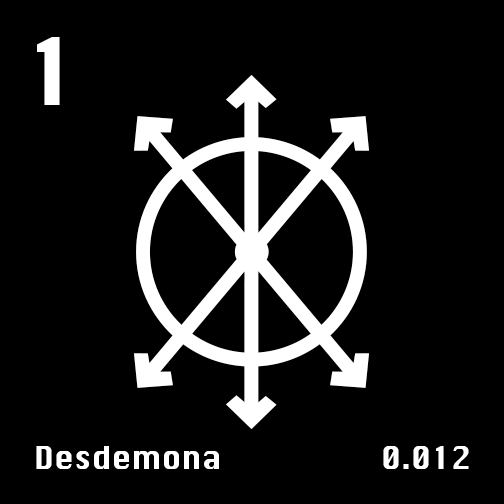





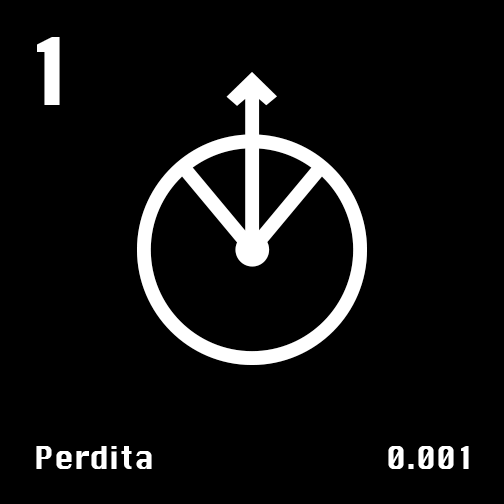
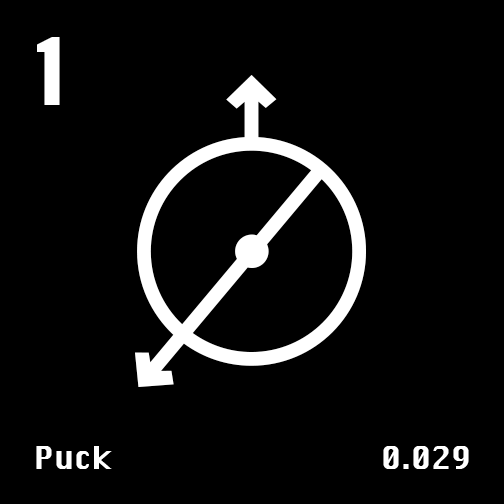

Uranus has nine irregular moons with some pretty cool names. These moons are Sycorax, Trinculo, Francisco, Caliban, Stephano, Prospero, Setebos, and Ferdinand and Margaret. The irregular satellites are probably captured objects that were trapped by Uranus’ hills sphere soon after its formation.
Uranus’s irregular moons range in size from 200+ km Sycorax to about 20 km Trinculo. The retrograde moons of this group can be divided into two smaller groups based on on-axis/orbital eccentricity. The inner group includes those satellites closer to Uranus and moderately eccentric, namely Francisco, Caliban, Stephano, and Trinculo. The outer group includes satellites with high eccentricity Sycorax, Prospero, Setebos, and Ferdinand. Margaret is the only irregular prograde moon of Uranus and has the most eccentric orbit of any moon in the Solar System.

